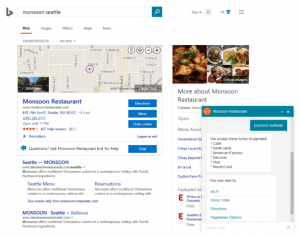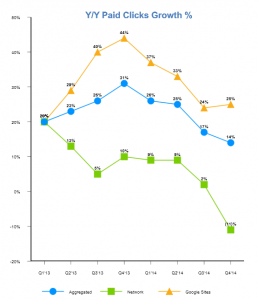
All right, let’s talk about meta descriptions!
Now you may be scratching your head wondering what a meta description actually is, but chances are you already know. In fact, you’ve most likely seen quite a few today.
You know when you Google something and you see a brief description under the list of results that come up? Well, that’s a meta description. It’s the small chunk of information found under the link of each search result.
Moz defines meta descriptions as “HTML attributes that provide concise explanations of the contents of web pages.” However, we can just stick with the chunk-of-information definition since it’s easier to understand.
These descriptions are important because they play a role in helping the person searching make the decision of clicking the link to the webpage. Obviously, we want those click-throughs, so they play a significant role in traffic. A good meta description persuades readers to click through to your site.
Some Reasons Why a Meta Description Is a Must
- Increased visits from organic traffic: When someone conducts a search on Google, there’s a competition taking place. The person has the option of clicking any link that appears. Having a meta description that’s detailed, relevant, and attention grabbing is crucial. You want something that says, “Click me!”
- Advanced search options: When people do an advanced search, Google pulls content from the meta description to match what’s being searched.
- Social media: Users are constantly sharing content via social media. When a piece of content is posted, the meta description is displayed. Without a meta description, the social media platform will pull random text associated with the website.
- Sell, sell, sell: At the end of the day, a meta description is just another way to advertise your site.
Key Components of a Well-Written Meta Description
- A well-written meta description conveys to the searcher a benefit of clicking through. It provides a small preview of the content.
- Include keywords to help search engines decipher the subject of the content. Don’t overdo the keywords, though, or Google will see this as spam. Use one to two keywords for optimum results.
- A good meta description has 155 characters. You don’t want your meta description to get cut off in a Google search. A description containing 155 characters is more pleasing to the eye.
- Use plain text; don’t include mathematical symbols, numbers, or grammatical symbols like quotation marks. Google may recognize these non-alphanumeric symbols as HTML code and cut off the description.
All of this sounds easy enough, right? With this guide, you should have the necessary knowledge to create a successful meta description.
Digital & Social Articles on Business 2 Community
(80)
Report Post







